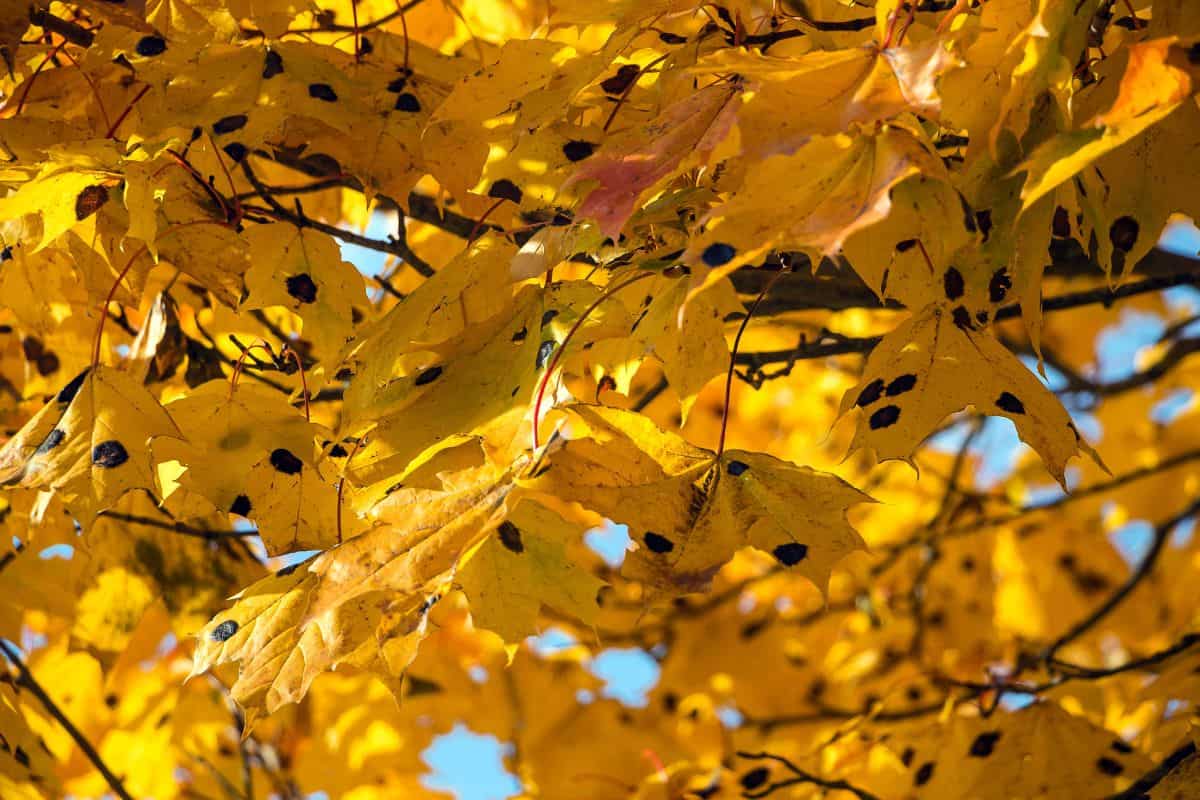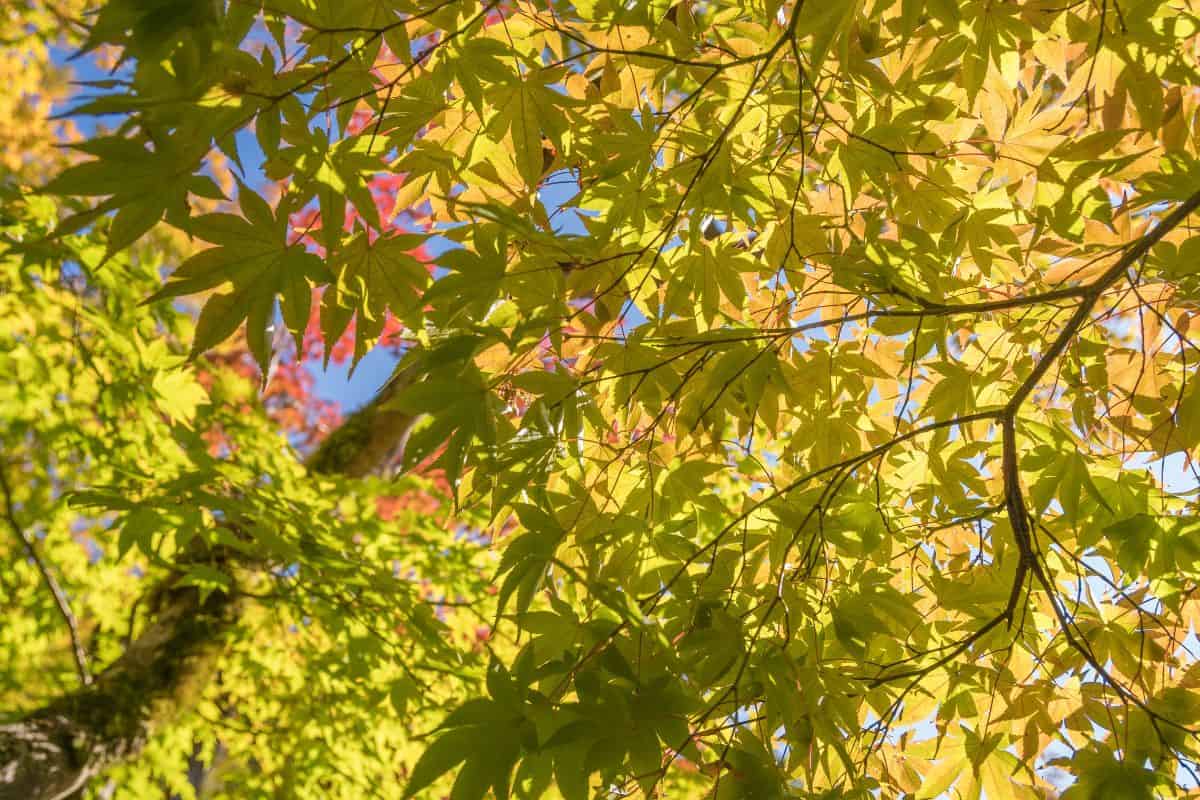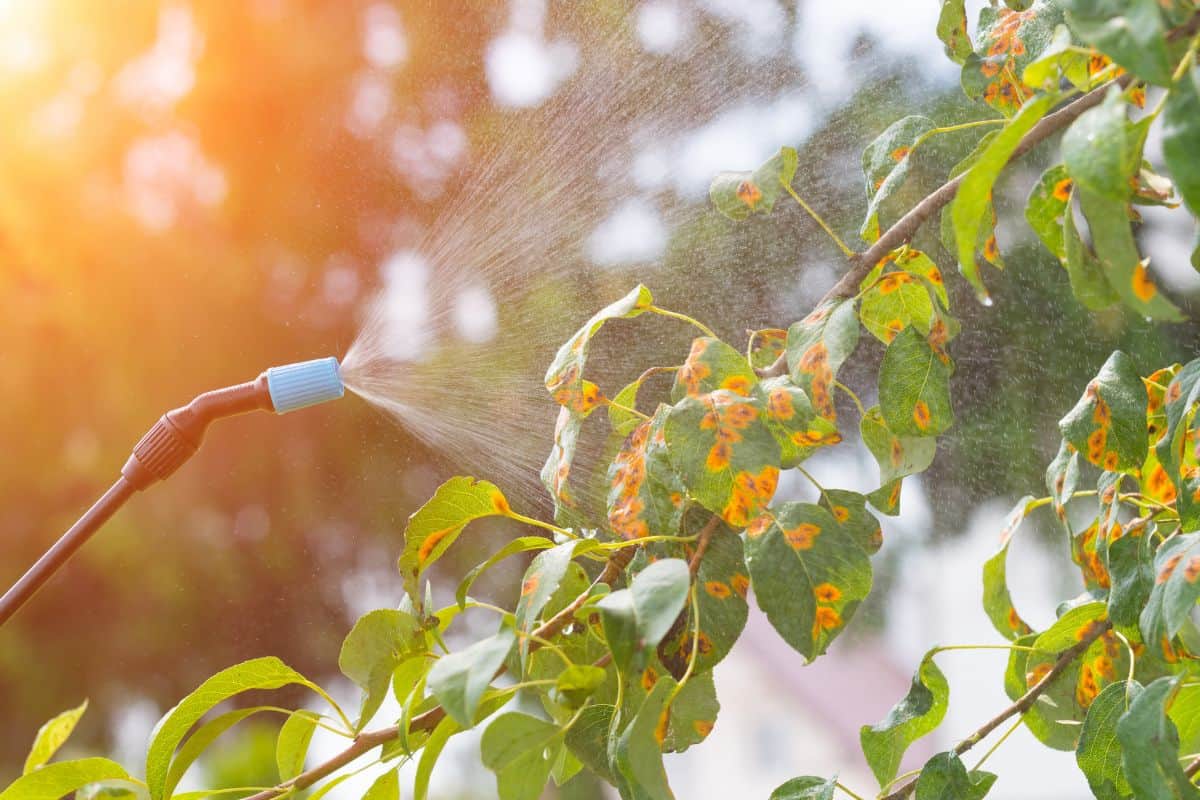Maple trees look beautiful during their season, so when you find strange markings on their leaves, you can't help worrying. Fortunately, you can prevent them from forming if you know what causes them. So, where do black spots on maple leaves come from? How do you address them? We have researched answers for you.
The black spots around Silver Maple leaves are called "Maple Tar Spots". These spots are a sign of a fungal disease, but they are not fatal to the tree itself. This fungal disease can come from anywhere, but they are typically a result of fungal spores released after winter and carried into the air, sticking to random leaves.
Seeing spots around plants is often a cause for concern, and for good reason. Some fungal diseases may be harmless, but some can kill our plants and trees. Knowing how to prevent them is key to prolonging our trees' lifespan. Keep reading below to learn more about what fungal diseases in trees mean and how to address them.

What Are Maple Tar Spots?
Maple Tar Spots are sound, black, and textured spots that form around Silver Maple leaves during the winter. They are generally harmless, but they can affect the visual appeal of maple trees making them undesirable.

Tar spots start to infest from the moment the fungus "wakes up" during the start of spring--at the same time as maple trees. The fungi, then, release spores which are then carried by the wind, then stick to the maple leaves which become their host. Once the leaves get infected, they will fall off as a response to stress.
The tar spots will first look inconspicuous, only forming pale yellow spots on the leaves. Over a few days, they will start to worsen until they become stark black spots that make the leaves unattractive.
Once they manage to stick to the leaves, they will make it their home--potentially even after the leaves die. They can use the leaves to pass the winter until it's time to release spores during the warm season.
If you fail to address this, a widespread infestation can occur until it becomes uncontrollable. Remember that it's often the smallest organisms that are the most difficult to handle, so it is best to prevent them or cut the root cause immediately when you notice them.
What Happens When Silver Maple Trees Get Tar Spots?
The microorganism responsible for Tar Spots is the R. acerinum, the most common variant found in some states. Maple Tar Spots are generally harmless and would not be critical to the tree's general health, which is why the issue gets ignored if the tree is in a public space.

Although these spots are not detrimental, they can cause the leaves to fall prematurely from stress even if these leaves are relatively young. This can affect how the tree looks aesthetically.
Fortunately, although these can be contagious, they are not known to harm the general health of other plants or shrubs. However, you should still address the issue if you don't want your plants to have unsightly dark spots.
Are There Other Harmful Fungi That Affect Maple Trees?
Aside from R. acerinum, there is another variant that can affect Silver Maple trees. R. punctatum also produces spots on your leaves, but the difference is easily noticeable.
The spots produced by R. acerinum are large and few, while the spots produced by R. punctatum are small and typically form in large clusters. They can also produce lesions around the leaves. Both will not kill the tree, but it ruins your leaves and shortens their lifespan.
How to Prevent Tar Spots

As with all horticultural practices, prevention is better than cure. This is especially essential if the Silver Maple tree is in a tourist district where people want to see visually pleasing sceneries. If the maple tree is near your home, you wouldn't want to be stressed about how to restore its leaves to their former beauty.
Here are ways you can prevent tar spots from your Silver Maple leaves.
Rake Leaves Regularly
Raking leaves will prevent a fungi infestation. It is highly critical to immediately get rid of affected leaves or fallen leaves that can be potential hosts for the fungi spores. Once an infection begins, it can be difficult to stop unless you start addressing it from day 1.
Make sure to rake out leaves during the spring and summer, since that's when fungi spores start to get released.
You can use the leaves as compost, or you can burn them up (note that this may not be the most environmentally-friendly solution).
If you choose to compost affected leaves, make sure the temperature can kill the bacteria so it won't spread.
Apply Fungicide
Applying fungicide is a more extreme preventative measure, but it is rarely necessary. If you plan to use fungicide, you need to determine the right time to apply them, otherwise, it won't be effective.
Check out this multi-purpose fungicide on Amazon.
Consult an Expert Horticulturist
If you're unsure what to do and want the best possible solution, talk to a horticulturist or an agriculturist. They will tell you whether you need to simply leave the tree alone, or if you need to apply chemicals to protect it better. It will generally depend on the environment in which the Maple tree is planted.
How to Cure the Maple Tree from Tar Spots

Tar spots are very difficult, if not almost impossible, to control once they start infecting mature maple trees. If they've already infected most of the leaves, you can only repeat the preventative measures to have a chance at controlling them.
At this point, using fungicide sprays may be warranted, although it is best to do this with younger maple trees. Younger trees react better with chemical sprays compared to older maple trees.
You can prevent further damage to the leaves by making sure they are not overly saturated with moisture, which is a common issue with infected trees.
What Diseases Are Fatal to Maple Trees?
Maple Tar Spots may not be fatal, but it's important to be familiar with the diseases that can potentially kill your trees. Knowing what they look like at their initial stages is extremely crucial so you'd be able to address it immediately and hopefully save your tree.
Here are harmful diseases to watch out for.
Anthracnose
Anthracnose is easily noticeable. The earliest sign of this disease is frost-like formations around your tree when there isn't any frost or snow. You can prevent this issue with proper drainage, but when the tree is already infected, it is best to call a professional.
Verticillium Wilt
Verticillium Wilt is a silent killer since you most likely won't know if the tree has been infected until it's too late. The disease typically starts at the roots, so taking care of them with regular fertilizer applications and watering can protect the tree from wilting.
Do Tar Spots Affect All Maple Trees?
Tar Spots affect all types of Maple leaves, not just Silver maple. Tar spots also affect Box Elders, which came from the same family as maple trees. Below are other types of Maple trees that can be infected.
Red Maple
Red maples are attractive trees that improve the health of landscapes with acidic soil. The distinct features of red maple are as follows:
- Smooth barks with a light-grey color.
- Leaves are white-green during the spring and red-orange during the fall.
- Twigs are slender and turn the same shade as leaves during the fall.
Sugar Maple
The Sugar Maple is more slow-growing than its counterparts. Here are its most notable characteristics.
- The bark is darker and rougher.
- Sugar maple has a sweeter sap, hence its name.
Norway Maple
Norway maple is hardier compared to other maples even if it is native to Europe. Below are its notable features.
- It has bigger and uniquely-shaped leaves compared to silver, red, and sugar maples.
- It has a milkier sap when the leaves are picked from the stem.
Silver Maple
Out of all these maple tree variants, Silver maple trees are the most commonly known. The wood of this maple variant tends to be more brittle than the others. It has a smooth bark that turns rougher as it matures.
Final Thoughts
Having spots around your maple leaves can be frustrating, even if they are technically not harmful. Make sure to maintain your maple trees to protect them from both fatal and non-fatal diseases so the tree can look consistently lovely and healthy.
If you want to learn more about Silver Maple trees, check out these related articles:
What To Plant Under A Silver Maple Tree?
Do Silver Maples Have Shallow Roots? [Are They Invasive?]

